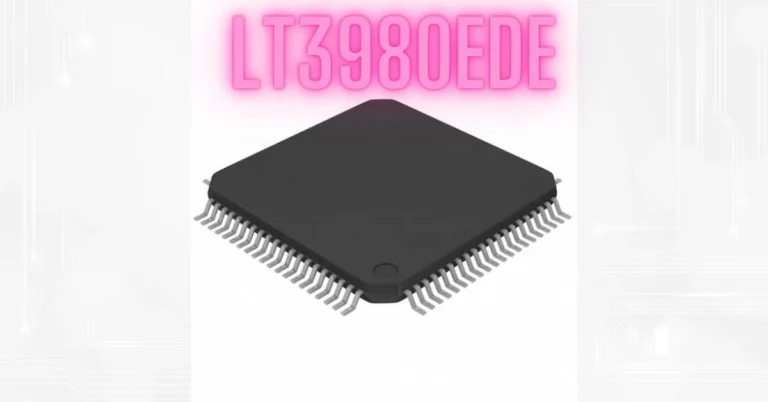How to Link HugoLog with an IPC Terminal for Enhanced Efficiency
In today’s high-paced industrial landscape, the fusion of reliable software and rugged hardware can mean the difference between operational success and costly downtime. One powerful pairing that’s gaining traction is the integration of HugoLog with an IPC Terminal. Together, they streamline workflows, enable real-time data monitoring, and automate logging in complex environments.
Whether you’re a plant manager, system integrator, or automation enthusiast, this comprehensive guide will walk you through how to link HugoLog with an IPC Terminal—from installation to troubleshooting, with clarity at every step.
What is HugoLog?
HugoLog is a versatile software solution tailored for logging, tracking, and monitoring operations across industrial environments. It specialises in capturing real-time data, automating log generation, and offering deep insights into operations.
Key Capabilities of HugoLog
- Real-Time Data Logging: Tracks operations as they happen.
- Data Analysis: Allows identification of performance patterns.
- Automated Report Generation: Reduces manual data entry.
- Error Detection & Alerts: Flags issues to prompt quick response.
By eliminating manual data collection and reducing human error, HugoLog makes operations more efficient and accurate.
What is an IPC terminal?
An IPC terminal (industrial PC) is a robust computing system engineered to withstand harsh industrial conditions, such as extreme temperatures, dust, vibration, and moisture. Unlike consumer-grade PCs, IPCs are built for durability, reliability, and continuous performance.
Core Features of an IPC Terminal
- Durability: Handles extreme industrial environments.
- Real-Time Processing: Supports time-sensitive operations.
- High Connectivity: Interfaces with machines, sensors, and networks.
- Minimal Downtime: Ensures uninterrupted operations.
An IPC is the perfect hardware host for HugoLog, especially in manufacturing, automation, or control system setups.
Why Link HugoLog with an IPC Terminal?
Integrating HugoLog with an IPC terminal unleashes the full potential of your industrial setup. Here’s what makes this connection invaluable:
Benefits of the Integration
- Improved Operational Efficiency: Data is logged automatically, saving time.
- Real-Time Monitoring: Respond to issues immediately.
- Centralised Management: Control, monitor, and report from one device.
- Data Accuracy: Minimise human error and duplication.
- Streamlined Workflows: Reduce manual processes and intervention.
When HugoLog and an IPC terminal are linked, you gain a centralised, connected, and automated system for data-driven decisions.
Prerequisites: System Requirements
Before starting the integration, ensure your systems are compatible and ready.
IPC Terminal Requirements:
- Operating System: Windows or Linux (HugoLog supports both).
- Network Compatibility: Ensure both the IPC and HugoLog are on the same network or are connected via USB or serial port.
- Hardware Specs: Meet or exceed HugoLog’s minimum requirements for CPU, RAM, and storage.
A robust and stable environment ensures that HugoLog runs smoothly and efficiently on your IPC Terminal.
Installing HugoLog on Your IPC Terminal
Once your IPC meets the requirements, it’s time to install HugoLog.
Installation Process
- Download HugoLog: Access the installer from the official HugoLog website or your company’s software repository.
- Transfer Setup File: If downloading on another machine, transfer using a USB drive or network share.
- Run Installer: Launch the .exe or .sh file and follow the on-screen instructions.
- Verify Installation: Launch the software and confirm that HugoLog runs without errors.
This foundational step ensures that HugoLog is ready to log and monitor data on the IPC terminal.
Configuring HugoLog for IPC Communication
With the software installed, you’ll need to fine-tune HugoLog’s settings to ensure seamless integration.
Configuration Instructions
- Launch HugoLog: Open it from your IPC Terminal’s desktop/start menu.
- Navigate to Settings: Go to the ‘Connection Settings’ tab.
- Select Communication Mode: Choose between wired (USB/serial) or wireless (Wi-Fi/Ethernet) depending on your infrastructure.
This setup ensures HugoLog is ready to communicate with external systems and internal sensors.
Establishing the Connection
With settings adjusted, you can now establish the actual connection between HugoLog and your IPC Terminal.
Connection Methods
- Wired: USB or serial connection (ideal for local setups).
- Wireless: Wi-Fi or Ethernet for remote access and monitoring.
Secure the Connection
- Input IP Address: For networked setups, enter the IPC Terminal’s static IP in HugoLog.
- Authenticate: Provide necessary credentials to authorise the connection (e.g., usernames, passwords, access tokens).
- Test Ping/Handshake: Ensure both systems acknowledge each other.
A strong, authenticated connection lays the foundation for stable, real-time logging.
Testing the Integration
Before deploying system-wide, test the setup to confirm everything works.
Testing Checklist
- Create Test Logs: Generate sample data from sensors or manual inputs.
- Monitor Data Flow: Watch real-time updates in HugoLog.
- Check for Errors: Look for any flags or failed connections.
- Review Logs: Ensure all expected parameters are captured correctly.
Testing prevents costly surprises later in full-scale production.
Optimize Your System Settings
To ensure efficiency, automation, and proactive responses, optimise both software and hardware configurations.
Optimization Techniques
- Enable Auto-Sync: Keep data continuously updated between devices.
- Set Up Alerts: Notify operators of issues like temperature spikes, system failures, or downtime.
- Automate Reports: Schedule daily or weekly data summaries.
- Backup Logs: Configure periodic backups for data security and compliance.
These settings help maintain smooth, hands-free operation across shifts.
Troubleshooting Common Issues
Even well-configured systems may occasionally face hiccups. Here’s how to resolve common issues:
Issue: Connection Fails
- Fix: Check cables, ports, or network configurations. Ensure both devices are on the same subnet.
Issue: Incompatibility
- Fix: Update HugoLog and your IPC’s OS. Make sure hardware drivers are installed.
Issue: Data Not Logging
- Fix: Recheck sensor inputs, permissions, and IP configurations.
Issue: Error Messages
- Fix: Review the logs in HugoLog. Check for correct port numbers, credentials, or unsupported characters in file paths.
A little preventive maintenance and diagnostics go a long way in reducing downtime.
Real-World Benefits of Integration
After successful linking, here are the tangible improvements you’ll notice:
Business Advantages
- Better Decision-Making: Leverage real-time data for quick responses.
- Reduced Labour Costs: Eliminate manual logging tasks.
- High Accuracy: Minimise human errors in critical operations.
- Full System Visibility: Access data from anywhere using IPC’s networking.
- Streamlined Compliance: Auto-generated reports help with audits and documentation.
It’s not just about logging—it’s about enhancing how your business operates.
Future-Proofing Your Setup
Your HugoLog and IPC integration should grow as your operation scales.
Best Practices
- Scalable Design: Choose IPCs and networks that support future expansion.
- Regular Updates: Keep firmware, OS, and HugoLog updated.
- Modular Connectivity: Use open standards (e.g., OPC UA, MQTT) for future system add-ons.
- Cloud Sync: Consider cloud-based backups and dashboards for remote access.
By investing now in the right integration strategy, you ensure longevity and flexibility in your systems.
Conclusion
Linking HugoLog with an IPC terminal is more than a tech upgrade—it’s a strategic enhancement to your industrial operations. From automated real-time monitoring to data-driven decision-making, this integration empowers your team with tools that work smarter, not harder.
In an age where data accuracy, real-time visibility, and operational efficiency are crucial, linking HugoLog with an IPC terminal offers a powerful advantage. This integration not only simplifies how you collect and analyse industrial data but also significantly reduces manual labour, human error, and response time to issues.







